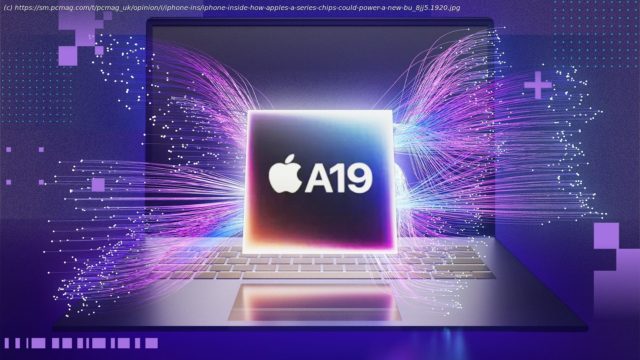We’ve done the testing, and Apple’s latest iPhone chips have the horsepower for a capable, low-cost MacBook laptop running on purely smartphone silicon. Might Apple make it happen?
Rumors of an A-series-based MacBook are still swirling, months after I first covered the possibility of a new low-cost version of the Apple MacBook Air. Based on early reporting, we could see a $599 MacBook powered by Apple’s A-series iPhone processors instead of the M-series chips currently used in Mac laptops. But the idea of a budget-friendly MacBook laptop with iPhone hardware inside gets even more interesting now that the more powerful A19 and A19 Pro processors have arrived in the latest iPhones.
Of course, we don’t know for sure which phone chip Apple might use for a laptop—if the company uses a phone chip at all, or if the mooted « budget MacBook » is really even a thing. Most Apple rumors, after all, are notoriously inaccurate. But a phone chip is the strongest bet for a budget MacBook. The bigger question is whether either of Apple’s new A19 smartphone processors can provide sufficient performance for a laptop experience.
To answer this question, I’ve looked at our iPhone, MacBook, and other laptop test results to settle the score. While you won’t find much overlap between our laptop performance tests and our smartphone testing, the few shared tests reveal that an entry-level Mac laptop with an iPhone chip inside is entirely possible. Here’s why.Setting the Stage: Testing Phones and Laptops
Obviously, we test laptops and phones rather differently. We evaluate laptops based on almost every performance-focused metric we can, and raw output is always in focus. Meanwhile, our phone testing focuses more on the interface, usability, connectivity, and cellular performance. Battery life and display quality are crucial to both, but our performance testing is far more granular for laptops than smartphones, since it plays a significant role in how those products are used. However, the lines are blurring, and a small but growing overlap in measurement tools reflects the convergence of these two product categories.
Of the many benchmarks we run on laptops and phones, only three serve up truly cross-platform-comparable results: the general-performance metric Geekbench (counting both its single- and multi-core tests) and the graphics test 3DMark Wild Life Extreme. But these tests give us three distinct insights into the A-series chips as potential laptop processors, letting us compare CPU core performance, overall productivity muscle (thanks to the various scenarios that the Geekbench test simulates off-screen), and graphics rendering capabilities.
Because we don’t know what chips would be used in a supposed A-series-powered budget MacBook, we’re looking at the performance of four different recent chips: the Apple A18 (as used in the iPhone 16), the A18 Pro (as used in the iPhone 16 Pro), the A19 (from the iPhone 17), and the A19 Pro (as tested in the iPhone 17 Pro, Pro Max, and iPhone Air).
I’m comparing these against a handful of laptops, starting with the Apple MacBook Air 13-Inch (2025, M4) and the Apple MacBook Pro 14-Inch (2024, M4), the two base models of current Mac laptops. We also looked at the Acer Aspire 14 AI, an Intel Core Ultra-powered budget laptop, and the Microsoft Surface Laptop (2025, 13-Inch), a midrange ultraportable with a Qualcomm Snapdragon X Plus processor.
Home
United States
USA — IT iPhone Inside? How Apple's A-Series Chips Could Power a New Budget MacBook






